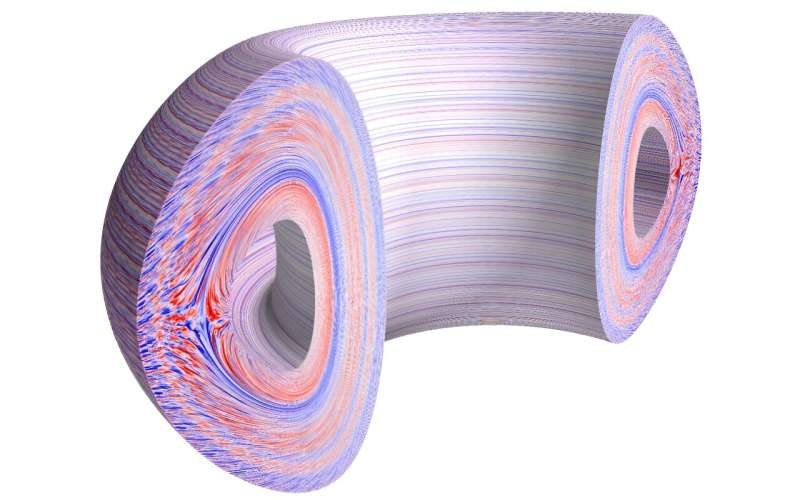Researchers leveraging the power of the Frontier supercomputer have made a breakthrough in understanding the complex dynamics of nuclear fusion, paving the way for more efficient and reliable fusion reactors.

Soon ions and electrons will dance their turbulent dance
With the potential to provide a practically limitless energy source as well as many other beneficial innovations, nuclear fusion has long been seen as holding great promise.
A team of researchers from General Atomics and the University of California San Diego has made a surprising discovery with the Frontier supercomputer at the Department of Energy’s Oak Ridge National Laboratory. One of the common misconceptions is that plasma rotation improves confinement, but they discovered that this may not always be the case.
Their simulations captured the complex interplay between heavy ions and light electrons that can stir turbulence, and showed that while rotation decreases ion-driven turbulence it also raises the total level of turbulence. This unanticipated result could have implications for the design and operation of future fusion reactors like the international ITER project.
Exascale Computing: Never Give Up On the Power of Scale
This was able to happen because of the incomparable computational power of the exascale Frontier supercomputer, which is capable of carrying out quintillions calculations in a single second. This allowed the researchers to realistically simulate the intricate dance of hydrogenic fuel ions and electrons as they are recycled through the plasma edge, a region important for global confinement but notoriously difficult to model.
Earlier studies were bound by computational constraints, so the other side of physics (either ion or electron) was kept to a minimum. The Frontier supercomputer enabled the team to simulate complex interactions among these fundamental components key in developing a more complete model of turbulence in the edge of the plasma.
The translation of the petascale to the exascale realm has made a significant impact in fusion research. As the interactions are subtle but have an impact on overall power production, being able to resolve this in a real time environment will help fine-tune the design and operation for future fusion reactors and improve our understanding of how best we can progress towards making fusion a practical energy source.
Conclusion
The Frontier supercomputer simulations provide key insights that could radically change the path to developing fusion energy. By revealing the intricate dance between ions and electrons at plasma’s edge, the findings could lead to potential new pathways for reducing turbulence and improving confinement in future reactors–key steps on the road to making fusion energy practical. In the global quest of pushing forward the frontiers of fusion research, this study stands as a testament to how far modern computing can help unveil the mysteries hidden in this exciting new energy source.
